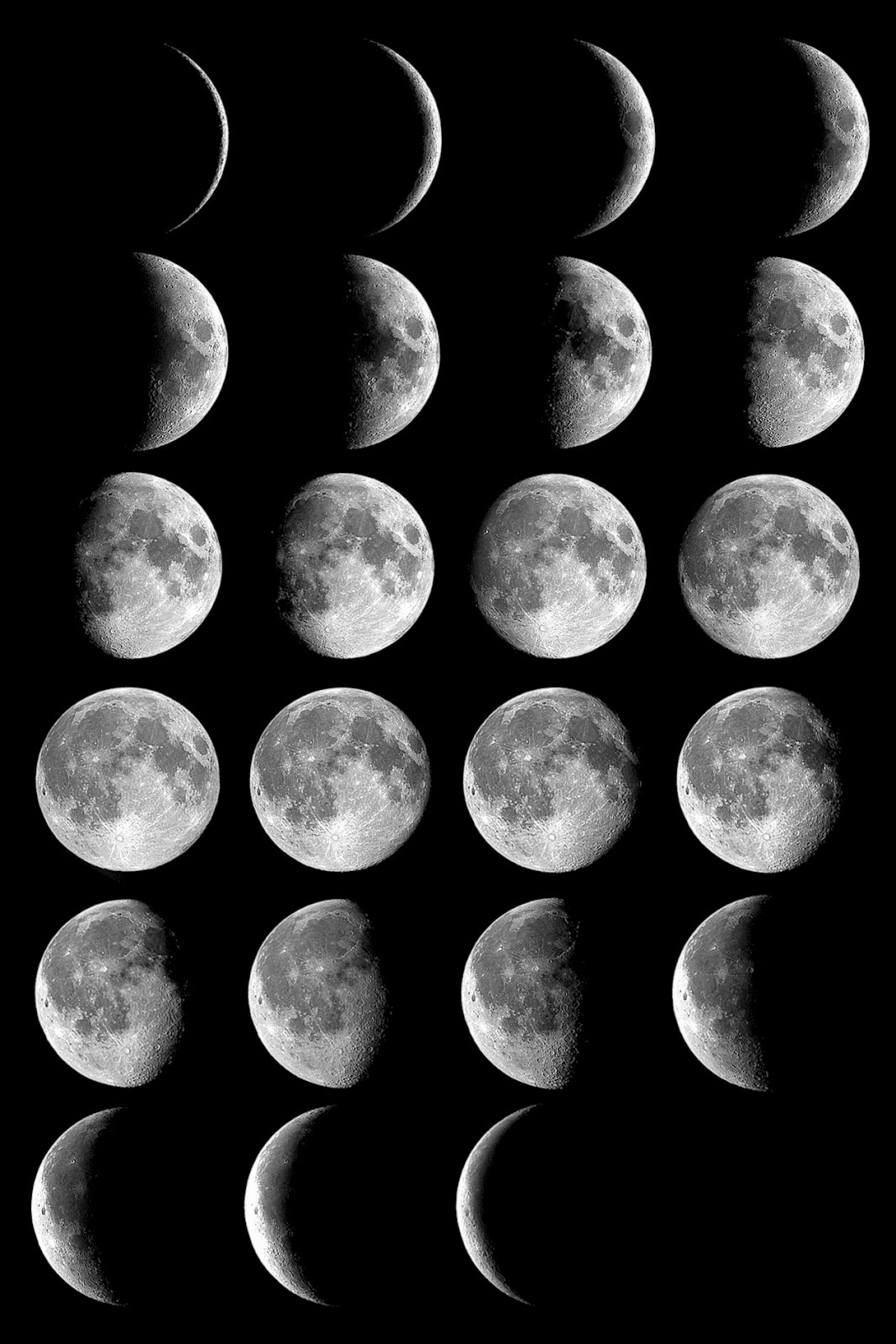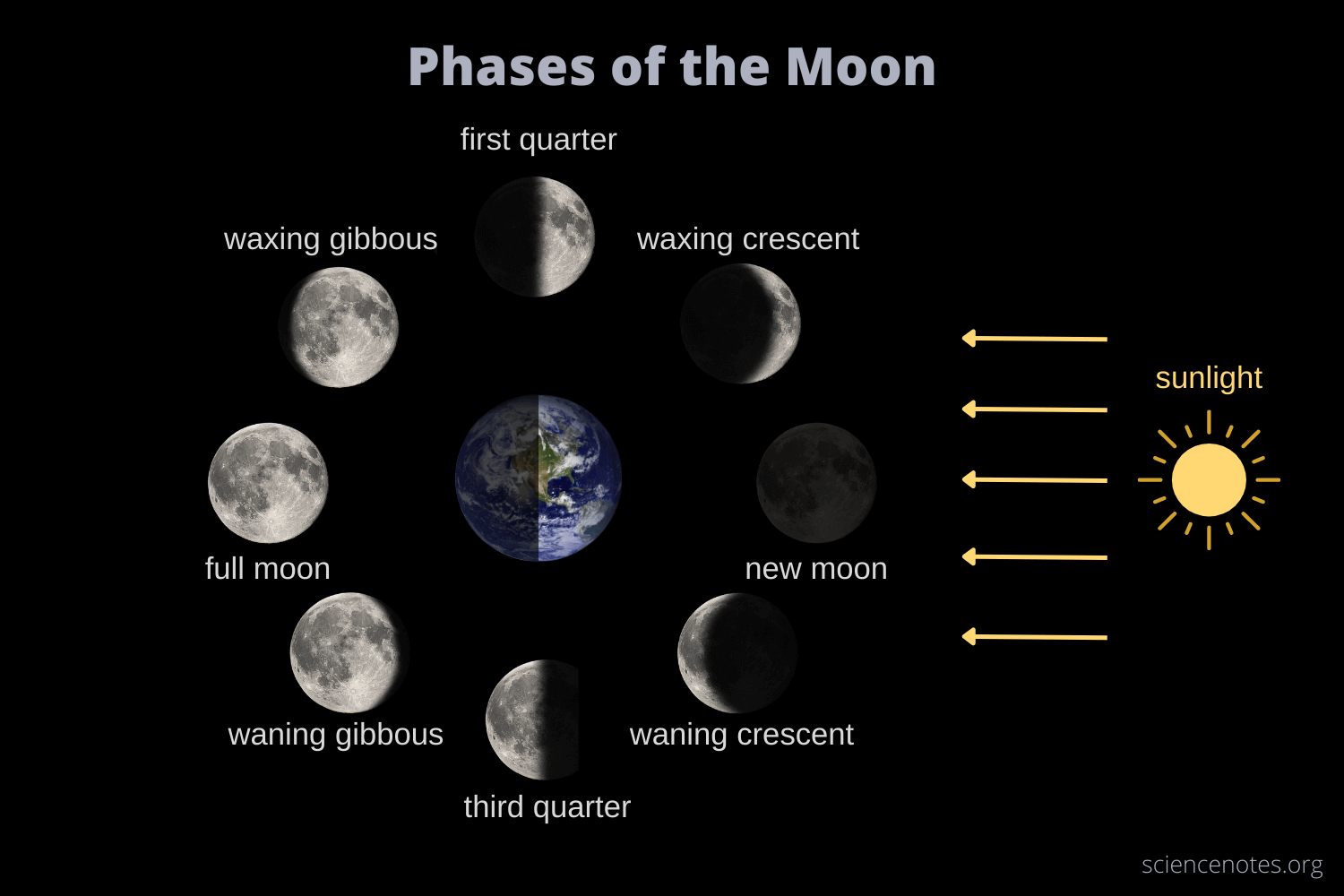Lunar Phases: Understanding The Cycle Of The Moon
The lunar phases play a significant role in our understanding of the moon and its impact on Earth. The cycle of the moon has fascinated humanity for centuries, influencing various aspects of life from agriculture to astrology. In this comprehensive article, we will explore the different phases of the moon, their scientific explanations, and their cultural significance.
Throughout history, the moon's phases have been observed and recorded, leading to various interpretations and beliefs. Knowing the lunar phases can enhance our understanding of natural phenomena and even guide us in making decisions based on the lunar calendar. In this article, we will delve into the intricacies of lunar phases, their classifications, and how they affect our daily lives.
By the end of this article, you will have a deeper appreciation for the lunar phases and their importance. Whether you are an enthusiast, a student, or simply curious, this guide aims to provide you with valuable insights into the world of lunar phases.
Table of Contents
- What Are Lunar Phases?
- The Science Behind Lunar Phases
- The Eight Lunar Phases
- The Impact of Lunar Phases on Earth
- Cultural Significance of Lunar Phases
- Lunar Phases in Agriculture
- Lunar Phases and Astrology
- Conclusion
What Are Lunar Phases?
Lunar phases refer to the different stages of the moon's visibility as it orbits Earth. These phases are a result of the moon's position relative to Earth and the sun. As the moon travels around Earth, sunlight illuminates different portions of its surface, creating the various phases that we observe from our planet.
The primary lunar phases include the new moon, first quarter, full moon, and last quarter. Each of these phases has unique characteristics and durations, contributing to the overall lunar cycle, which lasts approximately 29.5 days.
The Science Behind Lunar Phases
The science of lunar phases is rooted in astronomy and physics. The moon's orbit around Earth is elliptical, meaning that it does not travel in a perfect circle. This elliptical orbit affects how we perceive the moon's illumination from our viewpoint on Earth.
Key factors that influence lunar phases include:
- Orbital Mechanics: The gravitational forces between the Earth, moon, and sun play a crucial role in the moon's orbit.
- Sunlight Reflection: The moon does not produce its light; it reflects sunlight, which creates the visible phases.
- Observer's Perspective: The angle from which we observe the moon affects the amount of sunlight we see reflected.
The Eight Lunar Phases
The lunar cycle consists of eight distinct phases, each with its own unique features. Understanding these phases can enhance your appreciation of the moon's beauty and significance.
1. New Moon
The new moon marks the beginning of the lunar cycle when the moon is positioned between Earth and the sun. During this phase, the moon's illuminated side faces away from Earth, making it nearly invisible.
2. Waxing Crescent
As the moon starts to move away from the new moon phase, a small sliver of light becomes visible, known as the waxing crescent. This phase lasts until the moon is one-quarter illuminated.
3. First Quarter
In the first quarter phase, half of the moon's surface is illuminated. This phase is reached approximately one week after the new moon.
4. Waxing Gibbous
During the waxing gibbous phase, more than half of the moon is illuminated but not yet full. This phase continues until the full moon.
5. Full Moon
The full moon occurs when the entire face of the moon is illuminated by the sun. This phase is often associated with various cultural beliefs and celebrations.
6. Waning Gibbous
After the full moon, the moon begins to wane, transitioning into the waning gibbous phase where it is still more than half illuminated.
7. Last Quarter
The last quarter phase features half of the moon illuminated, similar to the first quarter but on the opposite side. This phase occurs approximately three weeks after the new moon.
8. Waning Crescent
The waning crescent phase is the final stage before the moon returns to the new moon. During this phase, only a small sliver of light is visible as the moon approaches its next cycle.
The Impact of Lunar Phases on Earth
The lunar phases can have various effects on Earth, influencing tides, wildlife behavior, and even human activities.
Tides
The gravitational pull of the moon is responsible for the rise and fall of ocean tides. During new and full moons, the sun and moon align, resulting in higher high tides and lower low tides, known as spring tides.
Wildlife Behavior
Many animals rely on lunar phases for mating, migration, and feeding patterns. For example, certain species of fish tend to spawn during specific lunar phases, while predators may time their hunting activities based on moonlight availability.
Cultural Significance of Lunar Phases
Lunar phases have held significant cultural meanings across different societies throughout history. Many cultures have developed calendars based on lunar cycles, influencing their festivals, agricultural practices, and religious observances.
- Harvest Moon: The full moon closest to the autumnal equinox, celebrated by farmers for its timing with the harvest season.
- Chinese New Year: Celebrated on the first day of the lunar calendar, marking the beginning of the new year.
- Ramadan: The Islamic holy month is determined by the sighting of the crescent moon.
Lunar Phases in Agriculture
Agriculture and farming practices have historically been influenced by lunar phases. Many farmers believe that planting, harvesting, and tending crops during specific lunar phases can lead to better yields.
Planting by the Moon
Some farmers follow the lunar calendar to determine the best times for planting:
- Planting during the waxing moon is believed to encourage growth.
- Harvesting during the waning moon is thought to improve preservation.
Lunar Phases and Astrology
In astrology, lunar phases are considered to have an impact on personality traits and life events. Astrologers often analyze the moon's position during various phases to provide insights into individual behaviors and future predictions.
New Moon Intentions
The new moon is often seen as a time for new beginnings and setting intentions for the upcoming lunar cycle.
Full Moon Release
The full moon is associated with culmination and release, making it an ideal time for letting go of what no longer serves you.
Conclusion
In conclusion, understanding lunar phases is not only fascinating but also important for various aspects of life. From influencing tides and wildlife behavior to shaping cultural practices and agricultural methods, the moon's phases offer a wealth of knowledge. We encourage you to explore how lunar phases can impact your life and consider incorporating lunar awareness into your daily activities.
Feel free to leave a comment below, share this article with others, or check out more content on our site to deepen your understanding of the wonders of the universe!
Thank you for reading, and we hope to see you again soon!
Best Netflix Movies 2023: A Comprehensive Guide To Must-Watch Films
Best Face Lotion For Summer: Keep Your Skin Hydrated And Glowing
Exploring The Picard Cast: A Deep Dive Into The Characters Of Star Trek: Picard


